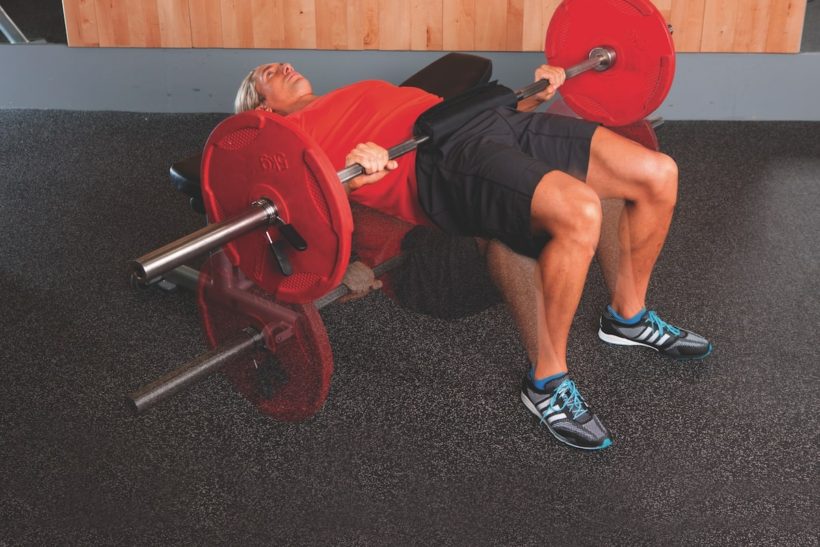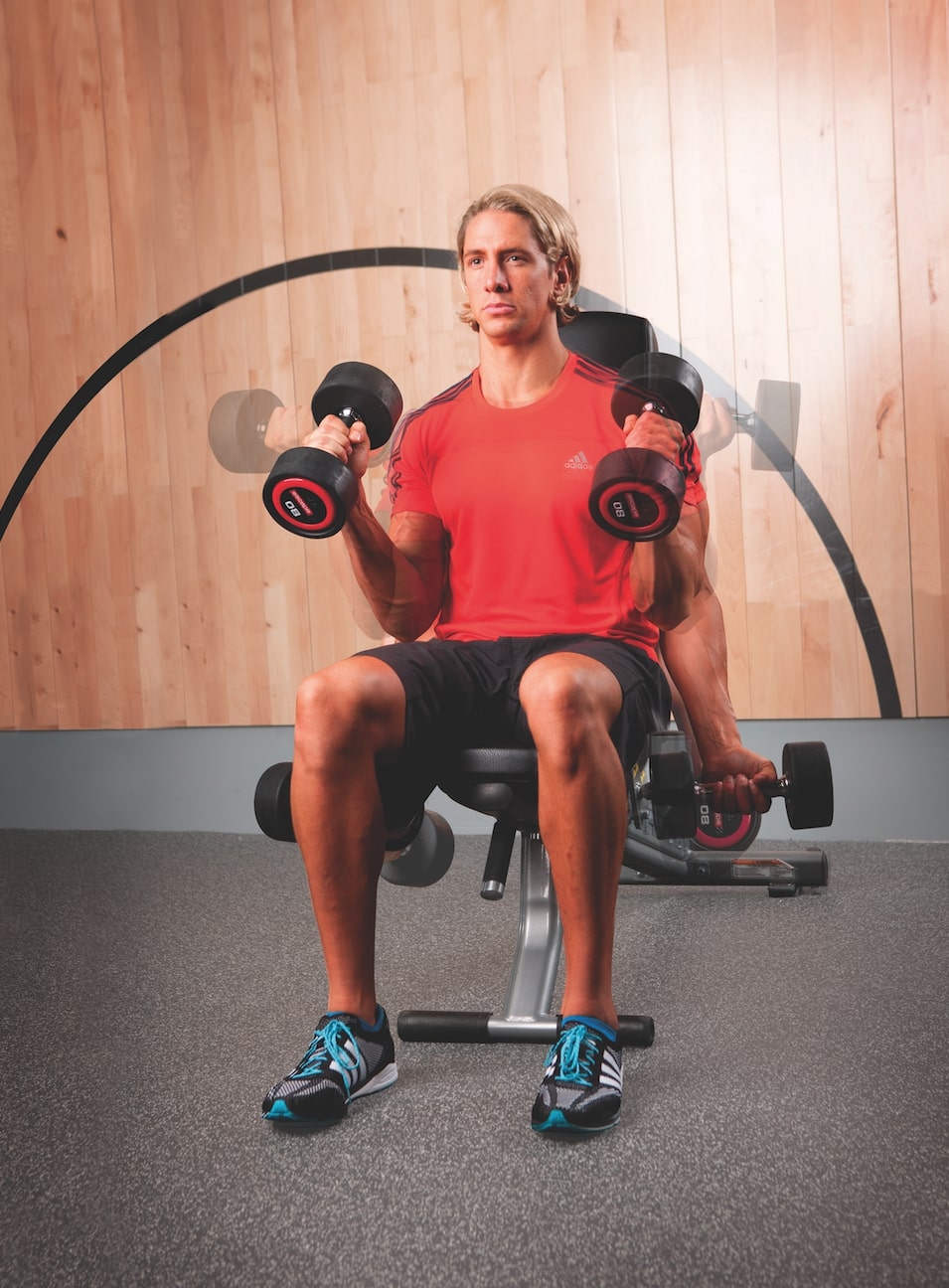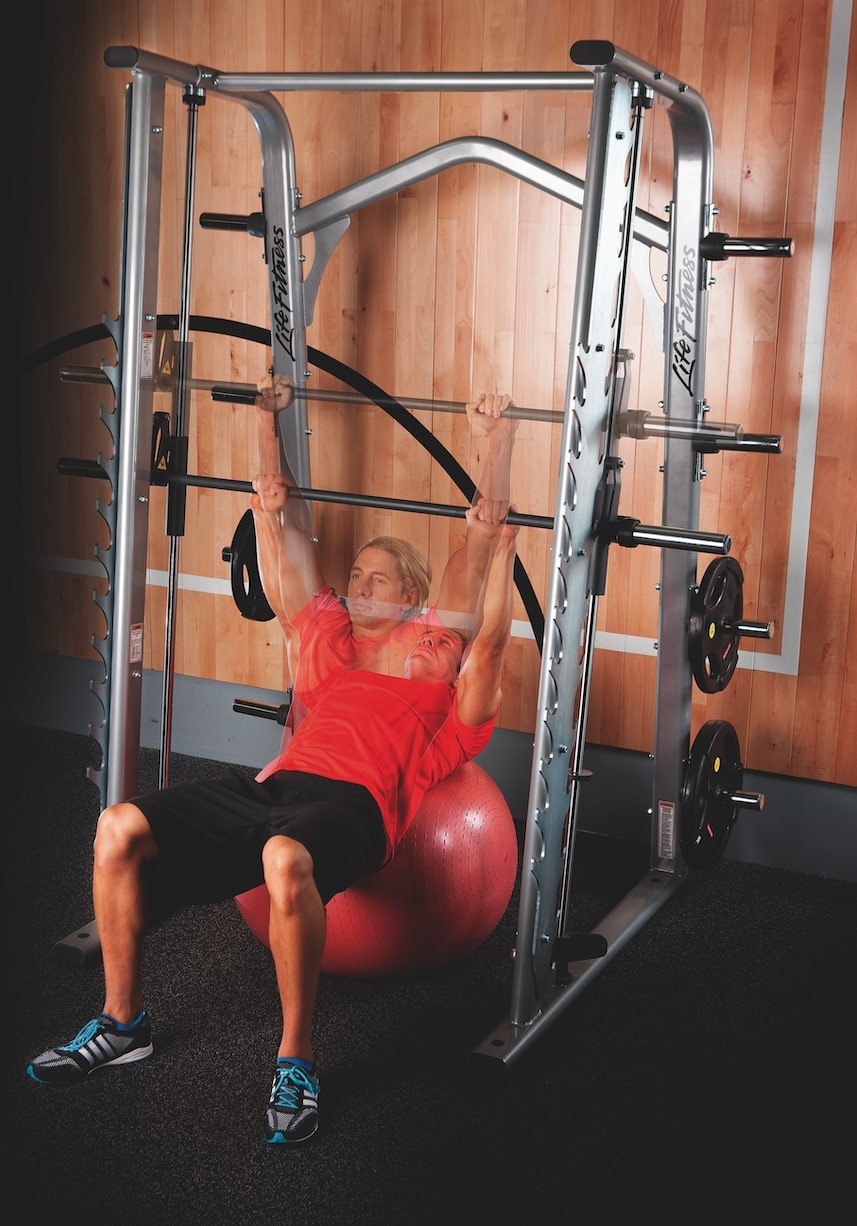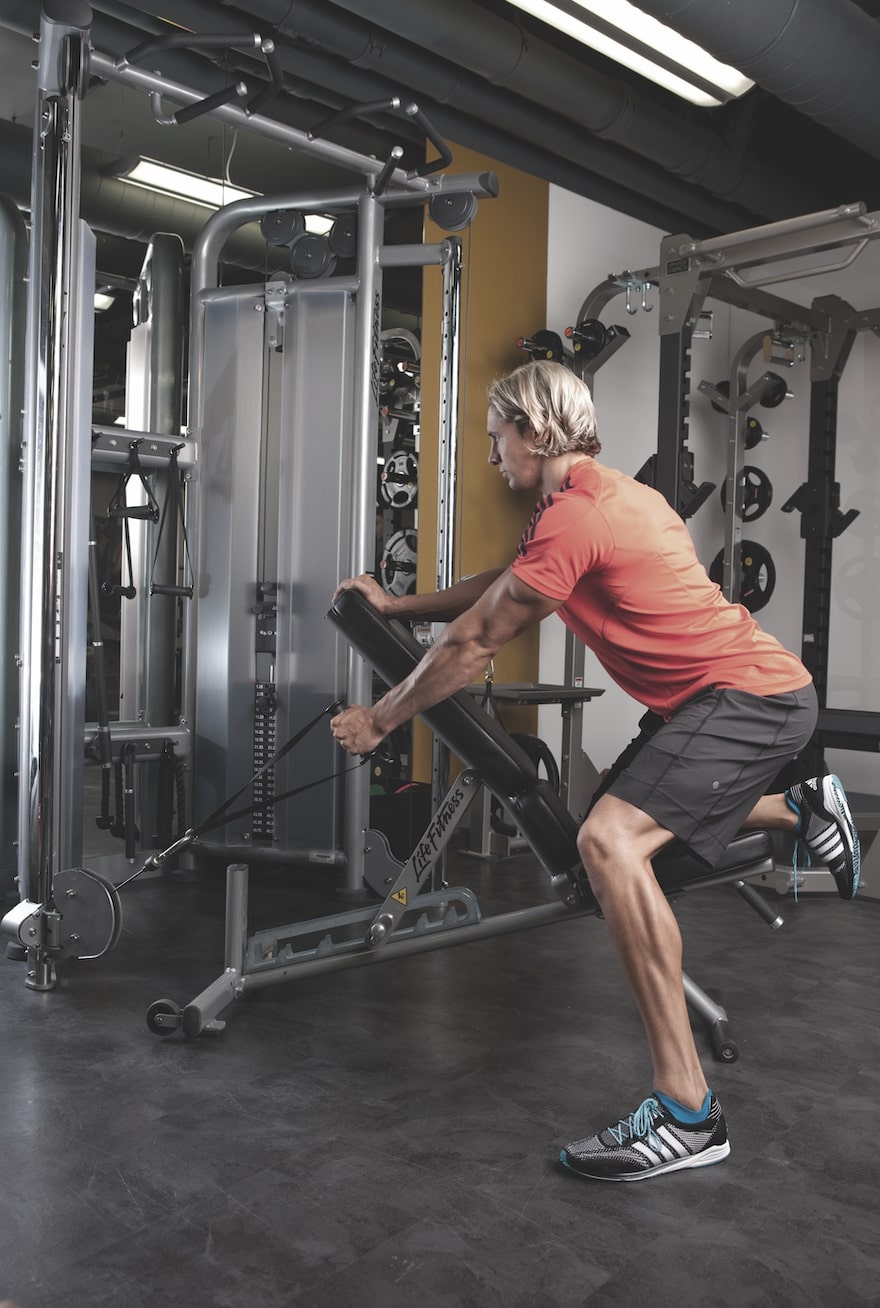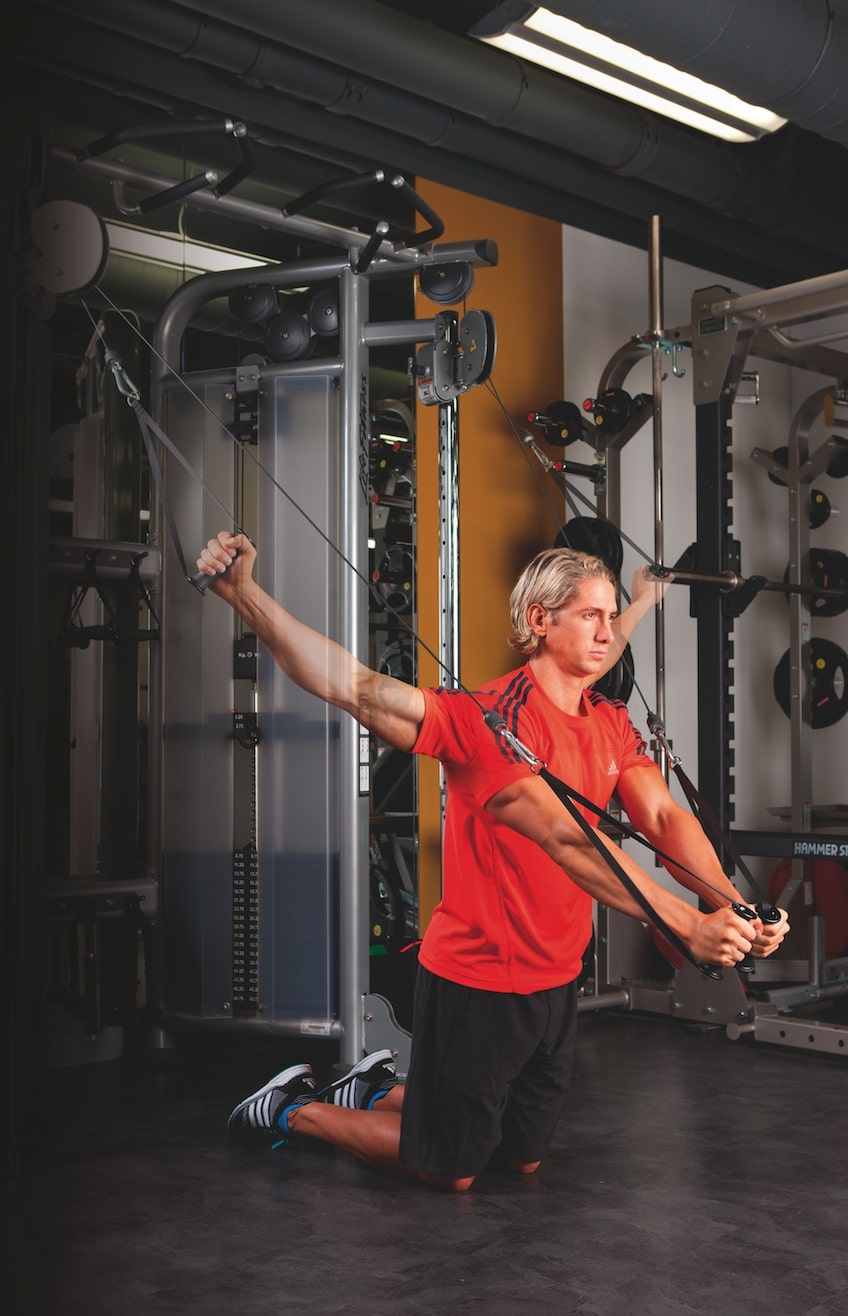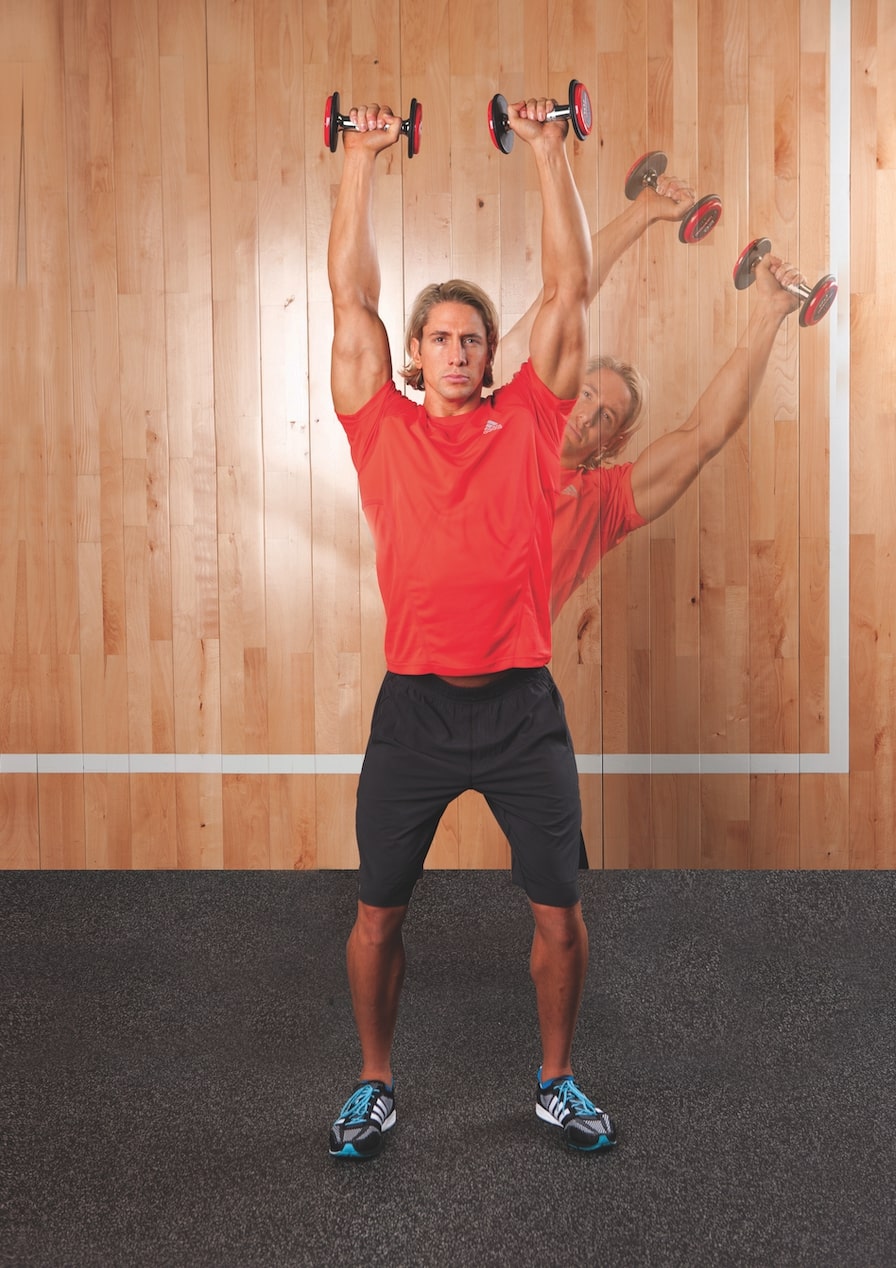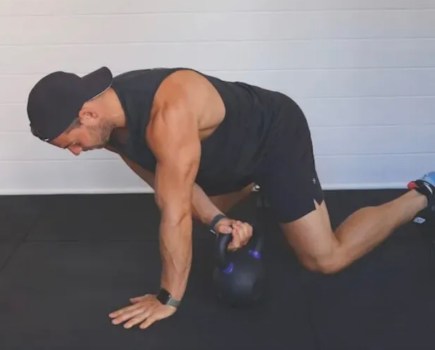Looking to shake things up? Here are effective six muscle-building gym exercises you need to do more.
Everyone wants something that can give them the edge – and these killer exercises will do just that.
While others are straining away at the same old routines, you can give your muscle growth a boost with a move they don’t know about.
Here Shaun Stafford, fitness model and performance director of City Athletic, explains and demonstrates each of these innovative gym exercises you need to do more to build muscle and stay one step ahead.
Discover the best dumbbell exercises for every body part
6 effective gym exercises you need to do more
1. Seated Zottman Curl
First up on the top effective gym exercises you need to do more is the seated Zottman Curl. First lesson: it’s spelled biceps, plural, not bicep. Second lesson: that means you need to target two different muscles for well-rounded, sleeve-filling arm development. Switching up your grip during a simple biceps curl will tick both boxes.
“This move targets the biceps brachii during the concentric (lifting) part of the move, boosting the peak of your arm,” says fitness model and trainer Shaun Stafford (pictured), “while the rotation and eccentric control on the way down switches the focus to the brachialis muscle, adding thickness to your arm. It can be taxing on your nervous system, so get it in early in your workout before you start to fatigue.”
- Sit upright on a bench, holding dumbbells by your sides with palms facing forward.
- Curl the dumbbells up to chest height, keeping your elbows tucked in close to your sides.
- Squeeze your biceps hard, then rotate the weights 90 degrees so they’re parallel to each other in a hammer grip.
- Slowly lower the dumbbells to the start and rotate your palms forward, ready for the next rep.
2. Gym Ball Smith Crunch
The abs are like any other muscle: the greater the resistance they have to strain against, the harder they will have to work and the more they will grow.
“It’s not always easy to train your core with weight but it’s certainly worth doing,” says Stafford. “Adding resistance stimulates more of the muscle fibres in your abs than is possible with bodyweight alone. With this gym ball Smith crunch you combine the instability of the gym ball with bar-based resistance.”
This move also strengthens your serratus muscles in your upper back, which will improve your shoulder stability.
“Do this tough exercise at the start of your abs routine when you’ve still got the required strength to get through all the reps,” Stafford says.
- Place a gym ball under the bar in a Smith machine.
- Hold the bar with hands just wider than shoulder-width apart.
- Lie back on the ball so your feet are flat on the floor, your knees are bent at 90 degrees and the bar is above your upper abs.
- Keep your hips still and contract your abs to crunch up explosively, pushing the bar overhead with straight arms.
- Then slowly lower yourself back to the starting position to complete one rep.
3. Weighted Hip Thrust
“Your glutes, hamstrings and lower back often get an easy ride in the gym,” says Stafford.
When squatting, most people struggle to fully engage these muscles, known collectively as the posterior chain, and miss out on the benefits of lower-body power, speed and acceleration.
“This lift allows all these muscles to be worked with substantial resistance, but without placing too much pressure on your back,” adds Stafford. “Add it to your legs day workout after squats.”
- Get into the start position by sitting on the middle of a flat bench with a barbell across your lap.
- Walk your feet out and slide down on the bench until your knees are bent at 90 degrees, your shoulders and neck are supported and the weight is on your hips.
- Drive through your feet and thrust your hips vertically until your body is horizontal. Your weight should be on your shoulder blades and feet.
- Squeeze your glutes hard at the top of the move.
- Slowly reverse the motion to return to the start.
4. Braced Single-Arm Row
“It’s quite hard to work your lats independently of each other, but this exercise allows you to do exactly that,” says Stafford.
This improves the focus on the primary muscles, the latissimus dorsi, as well as targeting your biceps and core.
“The cables give you a directional force to maintain tension in your muscles from start to finish,” adds Stafford. “This exercise can be deployed in two ways: either early on in your workout within the 8–12 rep range, or as a finisher – with 25 reps or more.”
Or, if you’re a glutton for punishment, you can do both.
- Set up a low cable with a D-handle next to a bench set at a steep incline.
- Rest one knee on the seat and the opposite foot on the floor.
- Grab the cable, bracing your upper body against the bench with your other hand.
- Keeping your core tight and shoulders retracted, pull the cable towards your armpit.
- Squeeze your lats, then slowly reverse the movement.
- Complete the set before mirroring the movement on the other side.
5. Kneeling Cable Flye
What’s the best move for a big chest? Most men would probably say the trusty bench press – but that’s not necessarily true. Here’s why you’re better off doing the flye.
“The fibres of the pectoral muscles run from your sternum up towards your armpits,” says Stafford.
“The flye lets you work the muscles in the direction their fibres run, unlike the bench press.
“That allows for greater contraction, a greater stretch and an increased range of motion for full pec development, with additional strength benefits that carry over into all your pressing moves.”
Here Stafford demonstrates this top-notch chest-building exercise.
Save it for the end of your upper-body session, slow it down and start light so your form doesn’t suffer.
- Set the handles of a dual-cable crossover machine at their highest point.
- Take a handle in each hand and kneel between the stands, positioning yourself with your hands just above your ears and slightly behind you so your chest is stretched.
- Keeping a slight bend in your elbows, contract your chest to pull the handles so they meet in front of you, just above your stomach.
- Slowly allow the cables to pull your arms back to the start position.
6. Overhead Saxon Bend
You may not have heard of him, but Arthur Saxon, aka ‘The Iron Master’, is a man whose lifting advice you should take.
This 19th-century strongman spent his time touring the world and challenging people to match his weightlifting feats.
The move named after him helped build the rock-solid core that contributed to his legendary strongman status.
This Saxon Bend does much more than just give you defined abs, though. That’s because it relies more on your obliques to stabilise your spine, allowing you to increase the weight on other lifts.
For you, that means improved posture and impressive shoulders. For Saxon, it meant he could press 168kg overhead with one arm. And he only ever lifted in his pants – they don’t make them like that any more.
- Stand with your feet shoulder-width apart and press a set of light dumbbells overhead.
- Lock your arms, keep your core braced and don’t arch your lower back.
- Keep your hips facing forward and slowly bend to one side, but don’t go beyond a range you’re comfortable with.
- Pause briefly, move slowly back to the middle and repeat on the opposite side.
Photography: Tom Miles, Mike Prior

